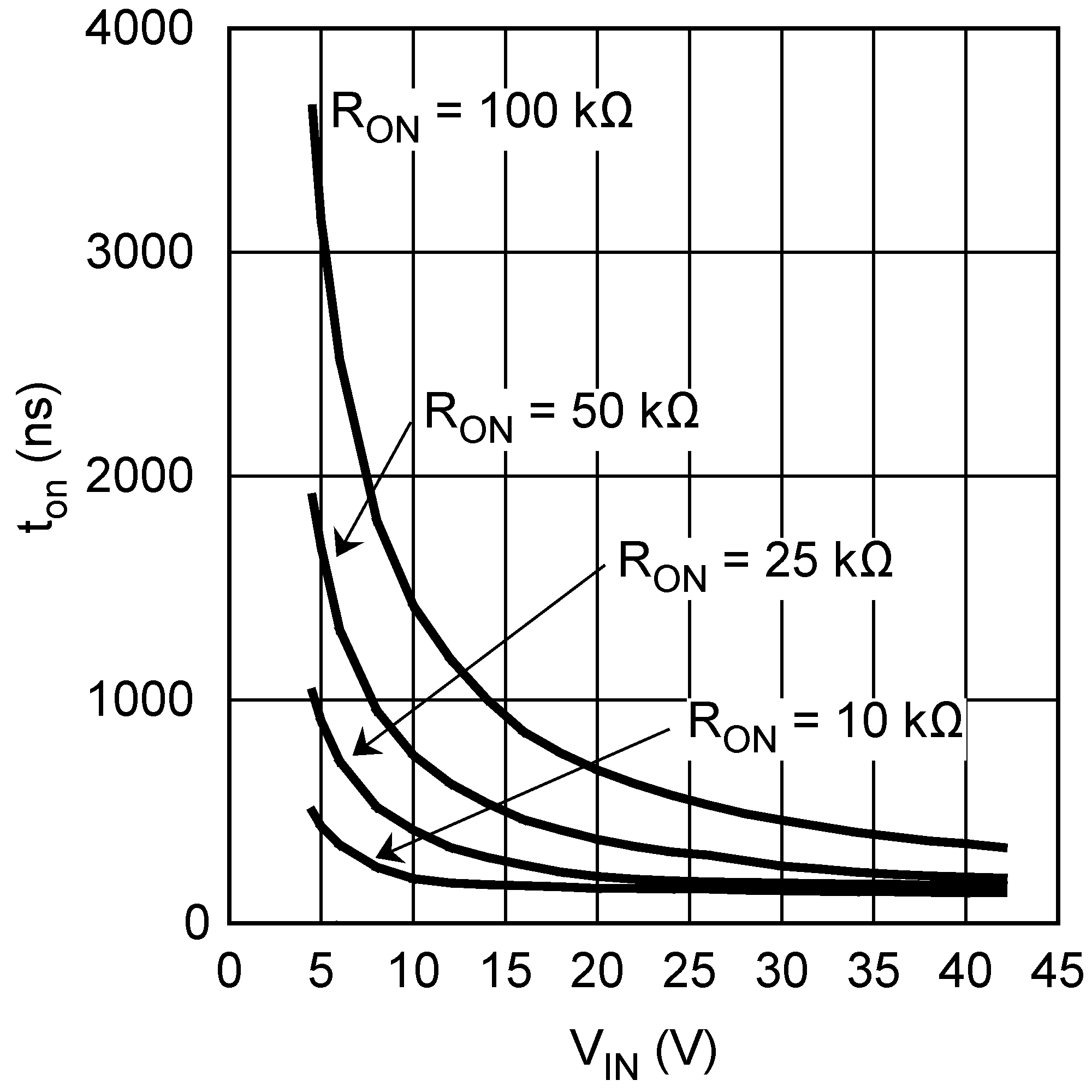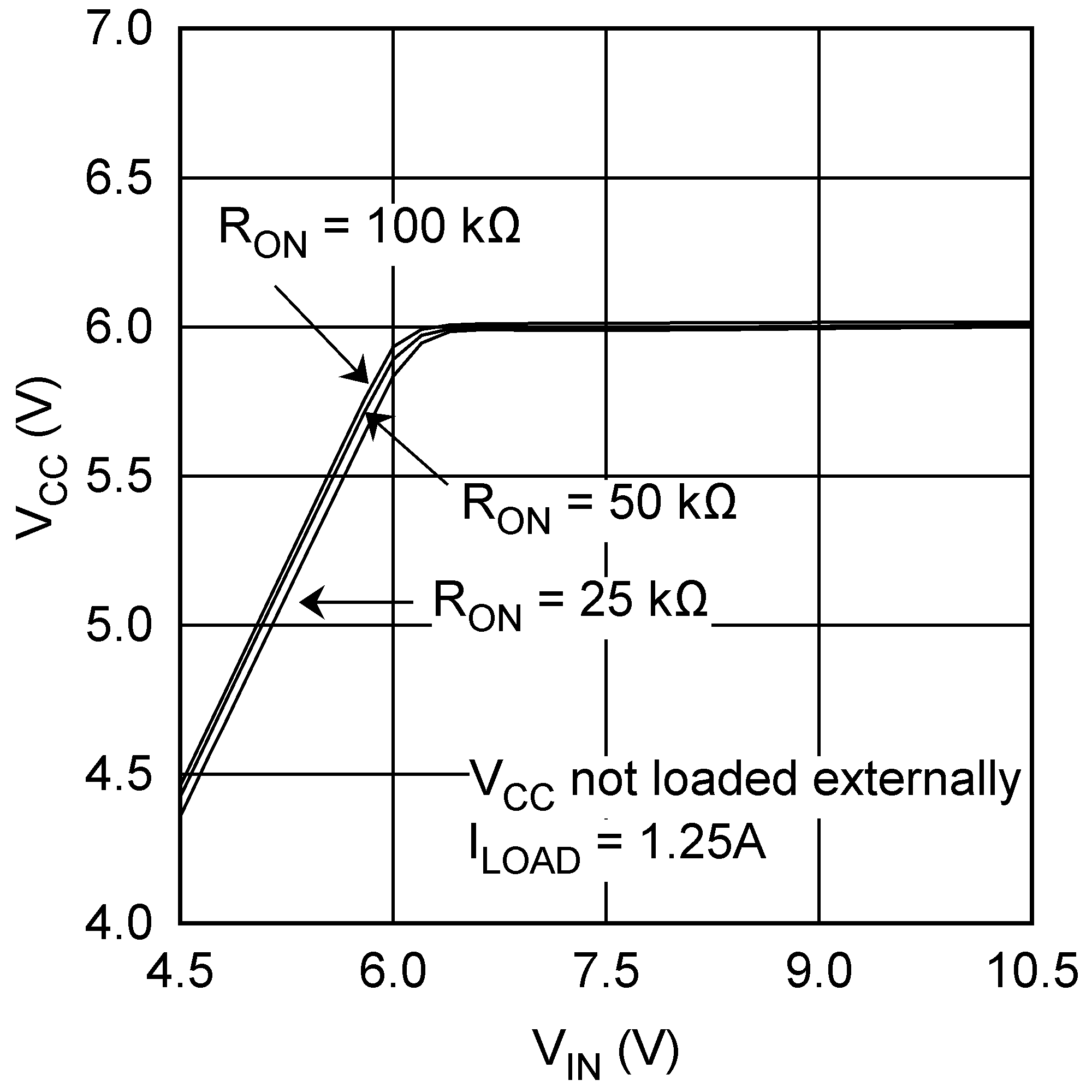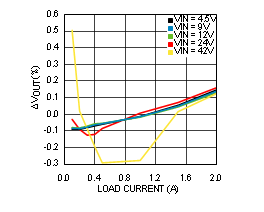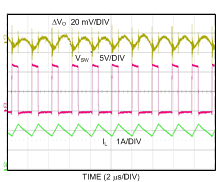SNVS737F October 2011 – June 2019 LMR24220
PRODUCTION DATA.
- 1 Features
- 2 Applications
- 3 Description
- 4 Revision History
- 5 Pin Configuration and Functions
- 6 Specifications
- 7 Detailed Description
- 8 Application and Implementation
- 9 Layout
- 10Device and Documentation Support
- 11Mechanical, Packaging, and Orderable Information
Package Options
Mechanical Data (Package|Pins)
- YPA|28
Thermal pad, mechanical data (Package|Pins)
Orderable Information
6.4 Typical Characteristics
Unless otherwise specified all curves are taken at VIN = 18 V with the configuration in the typical application circuit forVOUT = 3.3 V (Figure 25) TA = 25°C.




| VOUT = 3.3 V |

| VOUT = 0.8 V |

| VOUT = 3.3 V, 2 A Loaded | ||

| VOUT = 3.3 V, 2 A Loaded | ||

| VOUT = 3.3 V, 0.5 A Loaded | ||


| VOUT = 0.8 V |


| VOUT = 3.3 V |

| VOUT = 0.8 V |

| VOUT = 3.3 V, 2 A Loaded | ||

| VOUT = 3.3 V, 2 A Loaded | ||

| VOUT = 3.3 V, 0.5 A to 2 A Loaded | ||